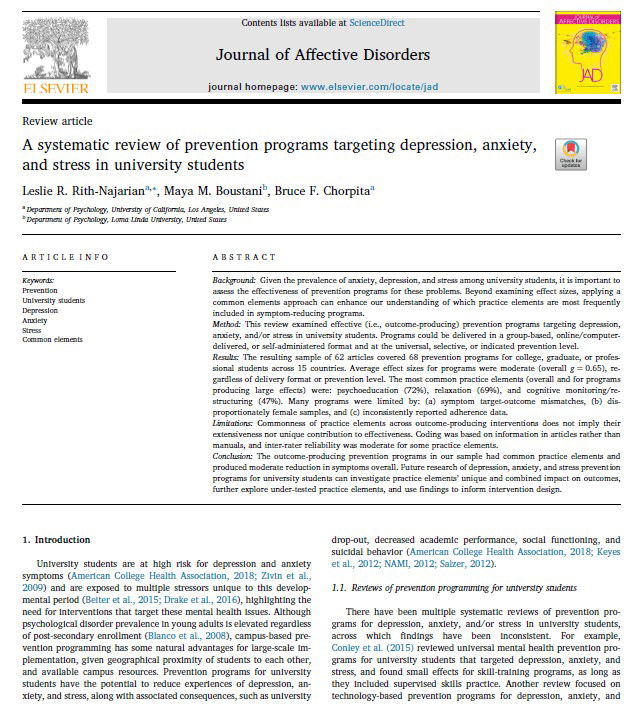A systematic review of prevention programs targeting depression, anxiety, and stress in university students

Abstract
Background
Given the prevalence of anxiety, depression, and stress among university students, it is important to assess the effectiveness of prevention programs for these problems. Beyond examining effect sizes, applying a common elements approach can enhance our understanding of which practice elements are most frequently included in symptom-reducing programs.
Method
This review examined effective (i.e., outcome-producing) prevention programs targeting depression, anxiety, and/or stress in university students. Programs could be delivered in a group-based, online/computer-delivered, or self-administered format and at the universal, selective, or indicated prevention level.
Results
The resulting sample of 62 articles covered 68 prevention programs for college, graduate, or professional students across 15 countries. Average effect sizes for programs were moderate (overall g = 0.65), regardless of delivery format or prevention level. The most common practice elements (overall and for programs producing large effects) were: psychoeducation (72%), relaxation (69%), and cognitive monitoring/restructuring (47%). Many programs were limited by: (a) symptom target-outcome mismatches, (b) disproportionately female samples, and (c) inconsistently reported adherence data.
Limitations
Commonness of practice elements across outcome-producing interventions does not imply their extensiveness nor unique contribution to effectiveness. Coding was based on information in articles rather than manuals, and inter-rater reliability was moderate for some practice elements.
Conclusion
The outcome-producing prevention programs in our sample had common practice elements and produced moderate reduction in symptoms overall. Future research of depression, anxiety, and stress prevention programs for university students can investigate practice elements’ unique and combined impact on outcomes, further explore under-tested practice elements, and use findings to inform intervention design.
Full text available here: Rith-Najarian (2019)


